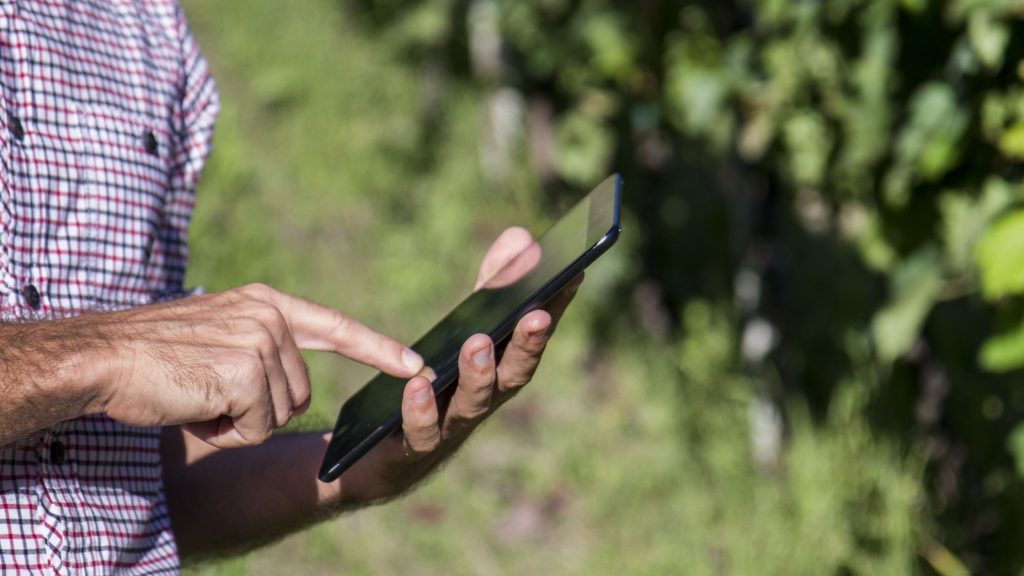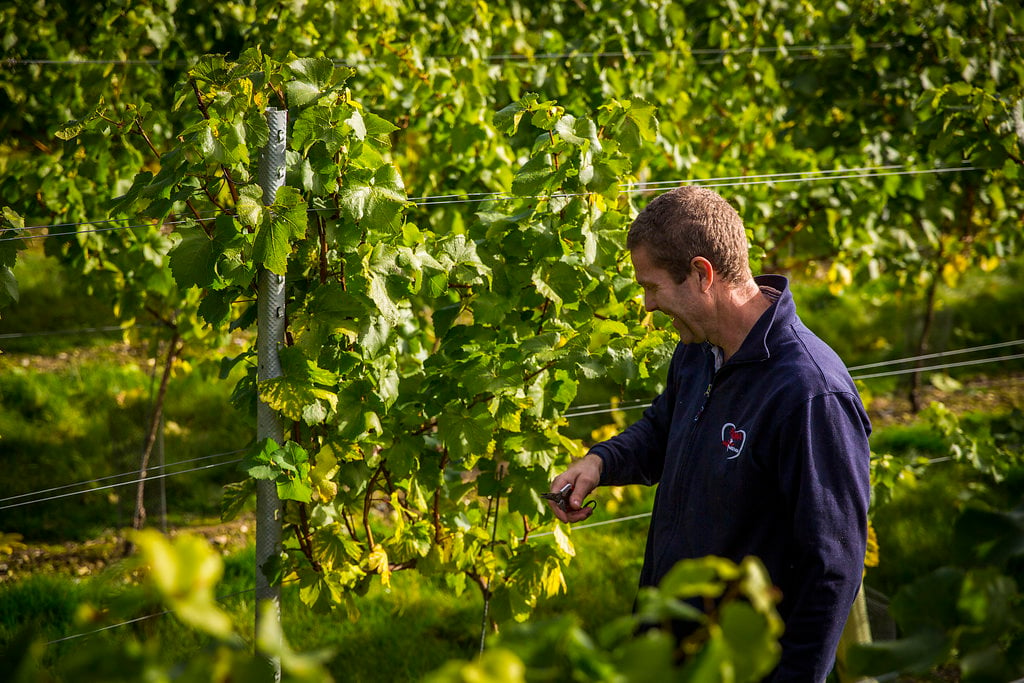Digital Farming Vs. Precision Farming – do you need both or either?
Understand the similarities and differences between precision farming and digital farming or smart farming. We stress the importance of understanding digital farming in the context of new regulations around sustainable agriculture and compliance, while offering the CATS framework to help farmers get started with digital farming.
Before we jump into the similarities and differences between the two terms, let’s start with some simple definitions and perceptions around them. While these terms are often used interchangeably, each has a distinct meaning that reflects different approaches and technological innovations in modern agriculture.
Introduction to Digital Farming
Digital farming, sometimes called smart farming, is a modern approach that uses digital techniques and information technology to transform the way farms are managed. Digital farming means integrating software, sensors, and data-driven tools into everyday agricultural work to monitor and control key factors like soil moisture, temperature, and humidity. By collecting and analyzing such data, farmers can identify areas for improvement and make strategic decisions that boost overall yield and efficiency. This approach involves using digital tools to track crop growth, manage resources, and respond quickly to changing field conditions. The essence of digital farming is about making better decisions—using precision and technology to optimize every aspect of crop management and production.

Precision farming or digital farming for crop management
Imagine a world where your crops get the perfect amount of water, fertilizer and tender loving care, right where they need it, and at the right time. No more guesswork, no more waste and no more stressed out plants! With precision agriculture, you can boost your yields and profits with some science-backed magic.
By gathering data and analyzing it, farmers can make informed decisions about things like planting, fertilizing, and pest control. Technology now enables controlled management of irrigation, fertilization, and pest control, increasing accuracy and efficiency.
Some common technologies or tools in this space include,
- GPS/GNSS systems for mapping and auto-steering, with GPS guidance being essential for automating tractor steering and optimizing crop yield.
- Yield monitors and mapping software for analyzing crop performance
- Variable rate application technology for precision fertilizer and pesticide application, supporting optimized fertilizer usage.
- Soil sensors and probes for measuring soil health and nutrient levels. Smart sensor technology is also used to measure soil moisture, helping to optimize water use and improve crop health. Measuring variations and within field soil variations allows for more precise resource use.
- Weather sensors and monitoring systems for tracking real-time weather conditions and collecting and analyzing environmental data.
- Drones and remote sensing technology for crop scouting and monitoring, supporting crop monitoring and crop management.
- Livestock monitoring systems for tracking animal health and performance.
- Irrigation management systems for optimizing water usage and application
- Livestock feed management systems for optimizing feeding, animal nutrition, feed rations, and waste reduction
- Decision support tools and predictive analytics software for making data-driven management decisions. These are typically bundled with or complementary to the hardware-based tech mentioned above and support strategic decision making.
- Reliable satellite communications for positioning, imagery, and data transfer, which are crucial for effective implementation of advanced precision farming technologies.
- Farm equipment optimized with GPS guidance and digital technology for improved efficiency and optimized fertilizer usage.
The choice of hardware depends on the specific types of information farmers want to collect and their overall smart farming goals, making the selection of sensors and equipment critical for accurate and reliable data collection.
Digital tools provide a comprehensive view of the whole farm, integrating data from all aspects of farm security, assets, livestock, and crop management for better oversight and decision-making.
These technologies aim to help farmers grow more crops with less effort, making your work easier and more profitable. They also support environmental sustainability, more food production, and optimizing complex farming systems. Digital farming provides meaningful added value by generating actionable insights and efficiency gains.
Most farmers have heard the terms precision agriculture or precision farming. Maybe some of you have even tried various tools in this. The next term might not be so commonly used.
McKinsey and Company published an article in October 2020 wherein they defined “digital farming” as any platform or application that processes input data to provide growers or crop advisers with agronomic decision-making support. These include proven digital offerings (such as variable-rate application) and ones that are more novel (such as in-season sensing). They excluded automation equipment, drones, and services that are not linked to agronomic decisions (for example, fleet-management software).
Precision farming and digital farming sound similar, but they actually have a different focus. Precision farming is all about using technology and data to make farming as precise and efficient as possible. This includes some of the tech mentioned in the precision farming section above. Technology in precision farming also enables farmers to avoid applying an equal amount or the same amount of fertilizer across an entire field. Instead, by measuring soil data, variations, and within field soil variations, fertilizer application is tailored rather than equal, optimizing resource use and reducing environmental impact.

On the other hand Digital farming means, a more broad term that encompasses all the ways technology can help farmers work smarter. This includes precision farming, but also other tools like farm management software, drone technology, and even using big data to make better decisions. So think of precision farming as a specific part of the larger world of digital farming.
Digital tools and smart technology support crop management, crop monitoring, and crop yield optimization, helping farmers make better decisions and improve productivity. These solutions also increase the farm’s production and improve the quality of crops and soil health.
I find sometimes that details can be confusing, but once you understand the context, things become a lot clearer. So let’s start there.
As a farmer, are you tired of manually tracking every aspect of your farm operation? Do you find it challenging to keep up with the latest technologies and techniques to increase your farm’s efficiency and profitability? Does worrying about compliance keep you up at night?
Then you need to understand digital farming now.
Digital farming means the integration of digital technologies into the day-to-day operations of your farm. With the help of digital tools and solutions, you can optimize your farm’s management and make informed decisions to boost your farm’s growth. Farmers can access real time data and use such data for actionable intelligence, improving their agricultural production processes and overall production process. Technology reduces resource use and human error, while AI enhances the attention of farmers to specific areas needing intervention. Digital solutions are sometimes met with resistance or obstacles, especially around data sharing and implementation, but the benefits for strategic decision making and whole farm management are significant.
The compliance confusion

As a fall out of the United Nations’ Sustainable Development Goals, adopted in 2015, countries around the world are increasing focus on sustainable agriculture. The EU has adopted the Green Deal, leading to the Farm to Fork strategy. The common thread across the EU regulatory framework is data collection and monitoring.
In August 2022, the citrus growers in South Africa had shipped their produce to Europe. Unfortunately, it was stuck at the EU ports for three weeks! Why? Because of False Coding Moth, a citrus pest native to South Africa but unwelcone in the EU. The EU gave South Africa less than a month to adapt to the new regulations. The EU measures were published on 21 June 2022, entered into force on 24 June 2022, and required that consignments arriving in Europe from 14 July 2022 onwards had to comply with the new requirements.
This blockage cost the South African citrus growers over R200 million (as of 12th August) in losses; plus because of the delay in arrival, most containers have missed their schedules and growers would get only half of what they expected from their fruit sales.
How does this link to digital farming? Knowledge and compliance are cornerstones of the how and why of digital farming.
Knowing what the standards are and using the right tools to document your compliance with the standards is the very foundation of why you should be looking at digital farming solutions for your farm.
Compliance regulations are just going to keep increasing whether you sell within your country or export to other countries. Getting started with digital farming early will help you stay ahead of the curve. If you’re looking for some help to get started with digital farming and digital agriculture, check out our CATS framework.
Best practices in digital farming
To maximize the benefits of digital farming, it’s important to follow best practices that combine technology with sound agricultural principles. Regularly monitoring and maintaining digital equipment ensures accurate data collection and system reliability. Integrating digital techniques with traditional farming methods can provide a balanced approach, while using machine learning models helps identify patterns and optimize crop management decisions. Prioritizing soil health through practices like conservation tillage and cover cropping, and using sensors to measure soil moisture, temperature, and humidity, can lead to better decisions and reduced input use. By adopting these strategies, farmers can revolutionize their operations, improve overall yield, and reduce their environmental impact—demonstrating the true potential of digital and precision farming.
Start with Digital farming means, finetune with Precision
In conclusion, the point is not of digital vs. precision farming, but rather what you can start with and how to grow.
Digital farming and precision farming are two ways that technology can help make farming easier and more profitable. Precision farming uses technology and data to make farming as precise and efficient as possible. Digital farming is a broader term that includes precision farming, but also other tools like farm management software, and big data to make better decisions.
If you’re a farmer and you’re tired of manually tracking everything on your farm or having trouble keeping up with new technologies, then you should look into digital farming. Digital farming is a good place to start and can help you optimize your farm’s management and make informed decisions to help your farm grow.
Another reason to consider digital farming is because of the new regulations around sustainable agriculture in the agricultural industry. The EU and other countries are focused on collecting data and monitoring farms to make sure they’re meeting these standards. Using digital agriculture solutions can help you stay compliant with these standards and avoid costly situations like the South African citrus growers who lost over $13 million due to tight compliance requirements and deadlines. Sign up to our newsletter to stay updated on sustainability regulations in the EU and what that means for farmers growing in or exporting to the EU.

